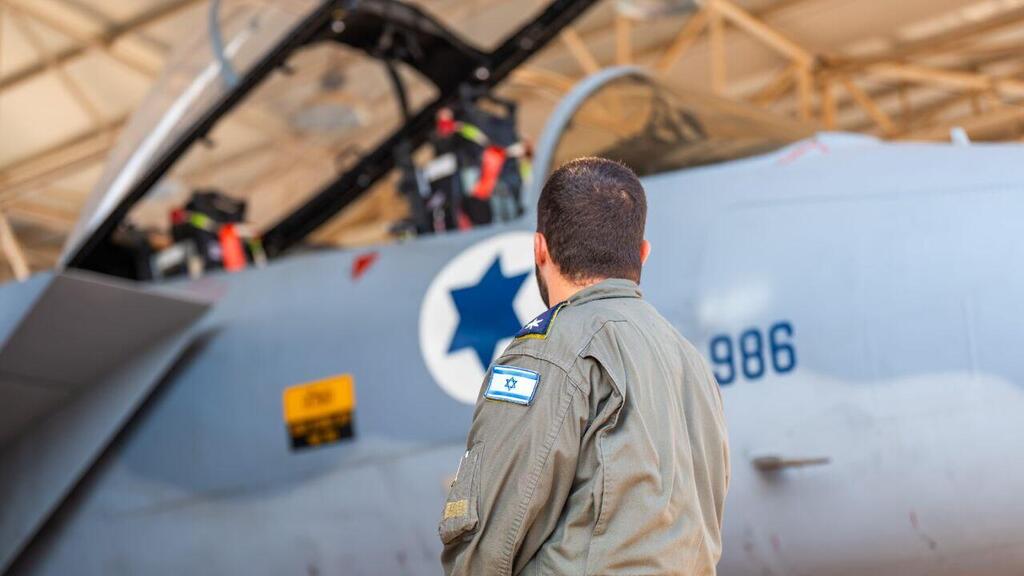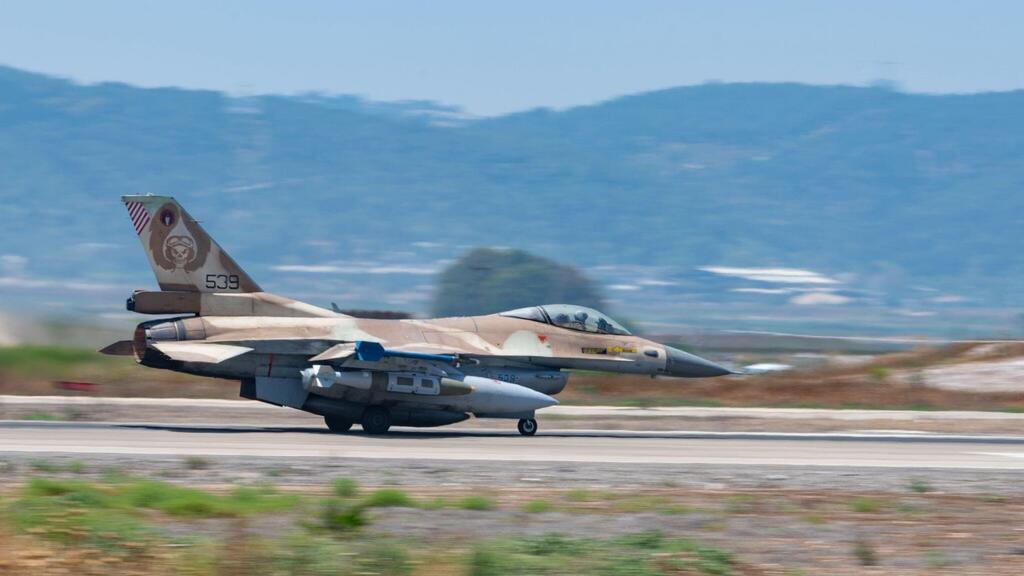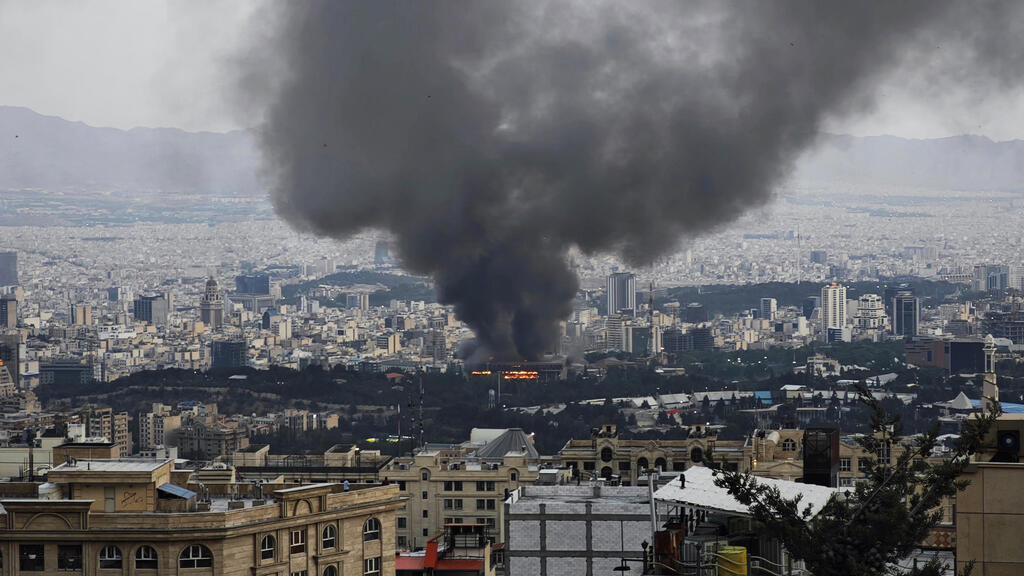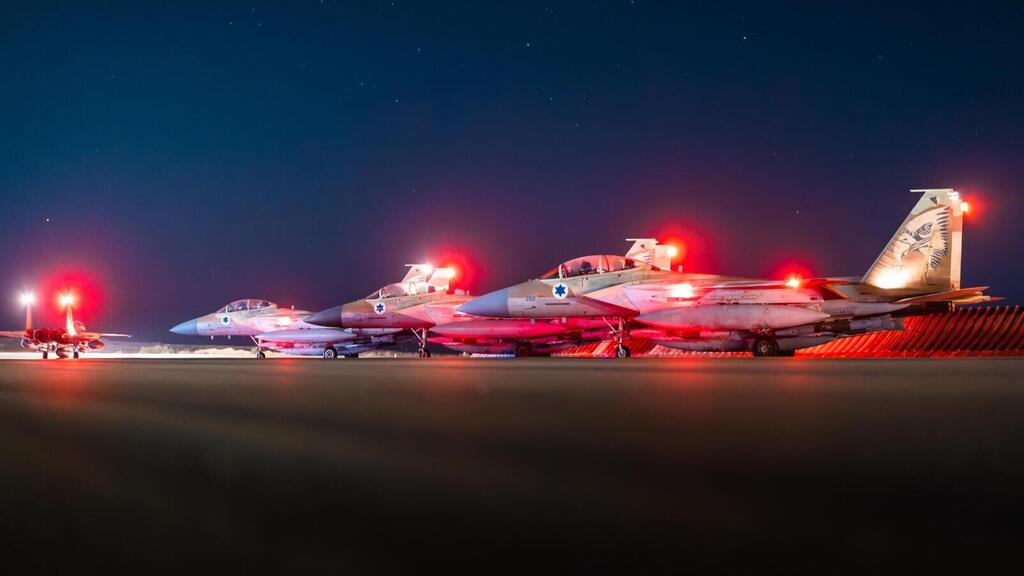‘Iranian pilots fled on sight’: Israeli Air Force pilot reveals details from first strike over Iran
‘Fighting 1,500 km from home isn’t a walk in the park,’ says IAF pilot Maj. N’ of the first strike in Iran; ‘We saw Iranian jets take off—then flee and vanish, and we stayed two hours and could’ve gone back—again and again’
“This is my correction for October 7—this time we were the initiators,” says Maj N. (31), an F-15 pilot from Squadron 133, one of the first to take part in the unprecedented Israeli airstrikes over Iran at the start of Operation Rising Lion Now, he shares what it was like to wait for the green light, the challenges of flying deep into enemy territory, and the deeply personal sense of “correction” for the failure that launched the war.
“The level of risk allowed us to take off, stay there for up to two hours, return, nd do it again and again,” he says.
Israeli Air Force takeoff for the first strike over Iran
While Israel enjoys air superiority across much of the Middle East, the situation with Iran was different. After Israeli strikes crippled key parts of Iran’s air defense systems, the Air Force was able to operate almost without interference. Now, Maj. N., a reservist student, husband, and father of one, reveals how surprised the Israeli pilots were by how little resistance they encountered.
In recent days, Iranian media claimed that Israeli pilots were shot down or captured, and that dogfights had taken place. “It’s funny—of course that didn’t happen,” says Maj N “Every pilot dreams of downing an enemy aircraft, and we were ready for that. But during the opening wave, when we entered Iranian airspace, we saw their pilots take off—and then flee. They flew inward, toward central Iran, literally running away from us and disappearing.”
As one of the pilots at the forefront of this historic operation, Maj. N. offers a rare behind-the-scenes account of the planning, emotions, risks, and critical moments that reshaped Israel’s security posture.
“I flew in the first formation over Iran,” he recounts. “This is a threat we’ve been studying for years. As has been reported in recent weeks, we were intensely preparing for a confrontation with Iran—we knew it was coming. But despite all the simulations and briefings, we didn’t know exactly when. We only found out that day that we were launching a real strike. The aim was to keep the chatter to a minimum. In the week leading up to it, we were at maximum readiness.”
The secrecy was compounded by personal fears for his family, who were vulnerable to the possibility of Iranian retaliation. “My biggest worry was for them,” he says. “We knew the enemy’s capabilities and plans. I couldn’t say anything at home—not a word to my family. It weighed heavily on me, knowing the entire country was about to change in an instant.”
Maj. N. describes three key emotions that shaped his experience: “First, a deep sense of mission. Every pilot dreams of being pushed to the edge of their capabilities. Routine security flights aren’t as demanding. This mission was complex. Second, facing the enemy. We know what kind of regime we’re dealing with—one that openly calls for our destruction—and we were taking action to secure our national future.
And third, a personal reckoning. On October 7, I was scrambled to defend the southern towns, and we were caught off guard. This time, we were the ones initiating. It felt like redemption.”
Flying into Iran, he explains, poses enormous operational and physical challenges. “We’re the tip of the spear. I was a fighter pilot in the lead wave, but what made it possible was the entire support structure behind us. This was a national-scale operation. Not many countries in the world can carry out something like this with such precision and coordination. I think it’ll be studied in military academies.”
He describes the coordination involved: “It starts with intelligence, technical crews, Home Front Command prepping back home—it’s a massive orchestra. Every move we make is backed by others—Mossad agents, refueling aircraft, everyone has a role. We fly in large formations, and each aircraft has a defined task: intelligence, threat suppression, strikes. The enemy responds.”
The flight to Iran takes about two hours each way—four hours of intense concentration and pressure. “Fighting 1,500 kilometers from home brings a whole different level of complication—especially with the risk of technical failures,” he says. “It’s one thing to have a malfunction over Tel Aviv. It’s very different over Iran, while they’re trying to shoot you down.”
Experience from past operations—like the Israeli Air Force’s campaign over Syria, which turned the skies into “a superhighway”—helped prepare them. “There’s also cooperation with other parties,” he adds, without elaborating.
Although the IDF prepared for a fierce Iranian response, the resistance was far weaker than expected. “We imagined a war with much more significant pushback. In the end, every step we took worked, and that severely limited their ability to respond as they wanted. Whether it was SAMs [surface-to-air missiles] or an air defense system, we neutralized them early on. The opening move was highly successful. Still, this isn’t a walk in the park—we’re facing a regional power, and we don’t get complacent.”
Squadron 133, where Maj. N. served, struck a range of targets, including sites tied to Iran’s nuclear program. “I hit tactical targets, took part in targeted killings, and struck high-value individuals. You know the lists,” he says. “Each of us got our assignment and executed it. We fly wing to wing, and we watch each other’s backs.”
“When I imagined a war over Iran, I expected more threats. But flying over Tehran, you can bring whatever weapons you want, however much you want. That’s what air superiority means. But it’s hard work. There are threats—and we handle them in real time.”
Get the Ynetnews app on your smartphone: Google Play: https://bit.ly/4eJ37pE | Apple App Store: https://bit.ly/3ZL7iNv
The risks were high, but calculated. “This isn’t a quiet, surprise attack. We had to maintain operational continuity. Every few hours, new forces rotate in to manage threats and sustain momentum,” he explains.
“In the air, we fly high, get intel, and everything works with precision. But let’s be clear—it’s never perfect. Even the weapons have tolerances. What I don’t destroy, someone else will. The enemy is adapting—relocating assets, trying to avoid precision strikes—but our system works. Almost constantly, there are Israeli aircraft over Iran.”
Asked about the media coverage, Maj. N. expresses mixed emotions. “I see a lot in the news, and it fills me with pride. This is a mission worthy of a major power. But when I see reports of casualties back met hurts. That’s my family and friends. That’s the Israeli people I’m here to protect. It’s painful, but I know that for every strike that got through, we prevented many others by eliminating threats.”
Mj. N. and his fellow Israeli Air Force pilots continue to guard the skies, knowing that this operation didn’t just change the regional security equation—it proved Israel’s air dominance.
“It’s not just about us as pilots,” he concludes. “It’s a national team effort—one made possible by an entire country working together.”




